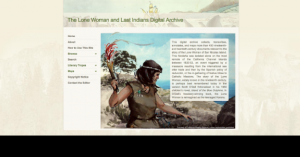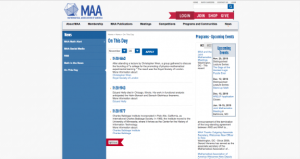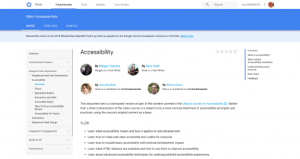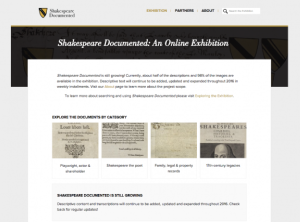Research and Education
Back to Top
|
 |
|
Impacts, Risks, and Adaptation in the United States: Fourth National Climate Assessment, Volume II
|
Science |
|
On November 23, 2018, the US government released Volume II of its Fourth National Climate Assessment report (NCA4), which "provide[s] a thorough examination of the effects of climate change on the United States." This report is a follow up to NCA4 Volume I, which was released in 2017 and focused on assessing the science of climate change. Among the many standout findings of NCA4 Volume II are that "[t]he impacts of climate change are already being felt in communities across the country" and that "annual losses in some economic sectors are projected to reach hundreds of billions of dollars by the end of the century" without substantial efforts to mitigate and adapt to climate change. Readers can download the 196-page report in brief in both English and Spanish as a PDF, as well as an eight-page summary containing a high-level synthesis of the report's findings. Individual full-length PDFs of the report's 29 chapters with accompanying PowerPoint slides are also available, as are PDFs of its public reviews and FAQs. NCA4 was produced by Congressional mandate under the Global Change Research Act of 1990, and the National Oceanic and Atmospheric Administration led the thirteen federal agencies involved in its preparation. [JDC] |
|





|
|
 |
|
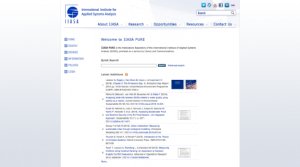 |
|
IIASA PURE
|
Social studies |
|
Researchers and students interested in large-scale interdisciplinary issues with international implications may find the PURE database to be a helpful resource. PURE is the Publications Repository of the International Institute of Applied Systems Analysis (IIASA), an independent policy-oriented research institute located in Austria with 23 member countries representing every continent except Antarctica. At the time of this writing, this resource contains more than 7,000 full-text publications, including scholarly articles, reports, and datasets, from dozens of programs such as "Human Settlements and Services Area" and "Transitions to New Technologies." Newly published materials are added to the repository regularly, and its archives date back to the early 1970s. In addition to a simple keyword search, IIASA PURE offers a robust advanced search feature allowing users to narrow their results to specific dates, item types, publication status, and other fields. Visitors may also browse the repository by year, research program, or author. Metadata for items in IIASA PURE is freely accessible and available for reuse. [JDC] |
|





|
|
 |
|
African Education Research Database
|
Social studies |
|
Begun in 2017 and launched in June 2018, the African Education Research Database (AERD) is "a curated collection of research undertaken in the past decade by scholars based in sub-Saharan Africa." This database, which seeks "to raise the visibility of African research" and lower barriers to accessing that research, is a collaborative initiative between the Research for Equitable Access and Learning (REAL) Centre at the University of Cambridge and Education Sub Saharan Africa (ESSA). Here, readers will find more than 2,200 items (as of this writing) of "social science research with implications for educational policy and practice," including peer-reviewed articles, doctoral dissertations, book chapters, and working papers, all produced since 2007, and the database is regularly updated with new material. Visitors can search and filter AERD by keyword, country, and research methods, and there is also an interactive map showing the number of studies available from each country. While the majority of its contents are in English, the AERD also contains some research in French and Portuguese. [JDC] |
|





|
|
 |
|
American Indian Digital History Project
|
Social studies |
|
Researchers and students of indigenous studies, American history, and political ecology may be particularly interested in the American Indian Digital History Project (AIDHP). This ongoing initiative was "founded to recover and preserve rare Indigenous newspapers, photographs, and archival materials from all across Native North America." At this time of writing, visitors to this project can browse digitized copies of the influential twentieth-century Mohawk newspaper Akwesasne Notes as well as Honga: The Leader, a newsletter from the American Indian Center, and the project plans to expand its holdings. The goals of AIDHP are to partner with Tribal communities and organizations and to "encourage responsible American Indian research methods and the increased use of Native source materials" in order to "raise the bar on academic and public research on or about Indigenous peoples." AIDHP is led by Kent Blansett, Assistant Professor of History, and Jason Heppler, Digital Engagement Librarian, both at the University of Nebraska at Omaha. [JDC] |
|





|
|
 |
|
Kindred Britain
|
Social studies |
|
Kindred Britain may especially interest digital humanities scholars and genealogical researchers, but this resource is fascinating for anyone with an interest in British history or culture. Launched in 2013, Kindred Britain provides an interactive interface for exploring the ties between nearly 30,000 historic and contemporary individuals "connected through family relationships of blood, marriage, or affiliation." This rich resource offers multiple ways to explore these connections: dragging the "nodes" of two individuals together to see how they are related, viewing curated connections and stories, or using the search function to look for a specific individual. In addition to its network panel, Kindred Britain also has timeline and map panels and each offer several lenses through which to filter the data, such as gender, historical events, and profession. The complexity of this resource is impressive, and those interested can also read several essays detailing and reflecting on its creation. Kindred Britain was primarily created by Nicholas Jenkins and Elijah Meeks of Stanford University and Scott Murray of the University of San Francisco. Readers should note that this site is best suited for desktop use and may be harder to use on a smaller screen. [JDC] |
|





|
|
 |
|
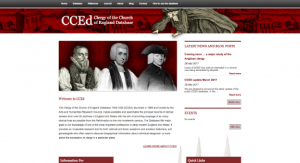 |
|
Clergy of the Church of England Database
|
Religion |
|
From 1540 to 1835, the Church of England was one of Britain's largest employers and most influential institutions. Since its initial launch in 1999, the Clergy Church of England Database (CCEd) has offered historians and scholars (both academic and amateur) a robust research tool that enables them to search clerical records for more than "155,000 individual clerics or schoolteachers" from over fifty different archives in England and Wales. Visitors can search the database by name and fields such as diocese, location, and date range, and they can browse people, locations, and bishops according to diocese as well. For new users, CCEd provides an extensive section on how to use the database, including information on interpreting career narratives. The helpful reference section contains bibliographies, lists of bishops and locations, and a glossary, and interested readers may also want to check out this resource's blog for updates and its journal for peer-reviewed articles and other research drawing on CCEd. Funded by grants from the Arts and Humanities Research Council, CCEd is directed by Arthur Burns at King's College London, Kenneth Fincham at the University of Kent, and Stephen Taylor at Durham University. [JDC] |
|





|
|









